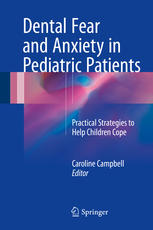

Most ebook files are in PDF format, so you can easily read them using various software such as Foxit Reader or directly on the Google Chrome browser.
Some ebook files are released by publishers in other formats such as .awz, .mobi, .epub, .fb2, etc. You may need to install specific software to read these formats on mobile/PC, such as Calibre.
Please read the tutorial at this link. https://ebooknice.com/page/post?id=faq
We offer FREE conversion to the popular formats you request; however, this may take some time. Therefore, right after payment, please email us, and we will try to provide the service as quickly as possible.
For some exceptional file formats or broken links (if any), please refrain from opening any disputes. Instead, email us first, and we will try to assist within a maximum of 6 hours.
EbookNice Team

Status:
Available4.5
23 reviewsThis book is a comprehensive guide to pediatric dental fear/anxiety (DFA) and phobia that will provide practitioners with a full understanding of the etiology, prevalence, assessment, and management of these conditions. The coping styles of children when under stress are explored, with discussion of their relevance to the assessment visit and treatment allocation. Practical treatment techniques are comprehensively covered, from non-pharmacological behavioral strategies relevant for children with no or mild DFA to those approaches more appropriate for children with severe DFA/phobia. The importance of the use of language and communication skills to build rapport and allay anxiety is explored. Relaxation and hypnosis techniques are described, with guidance on how to introduce these to patients and their parents/carers. Techniques that help children cope when receiving injections are detailed, including systematic needle desensitization; these provide practitioners with options to help resolve DFA and phobia regarding needles. Intravenous sedation, including the challenge of cannulation, is covered comprehensively. Furthermore, cognitive behavioral therapy is presented, with suggestion of practical self-help material when appropriate. The closing chapter looks to the future, discussing the barriers to and the changes required for the creation of more child-centered DFA services.